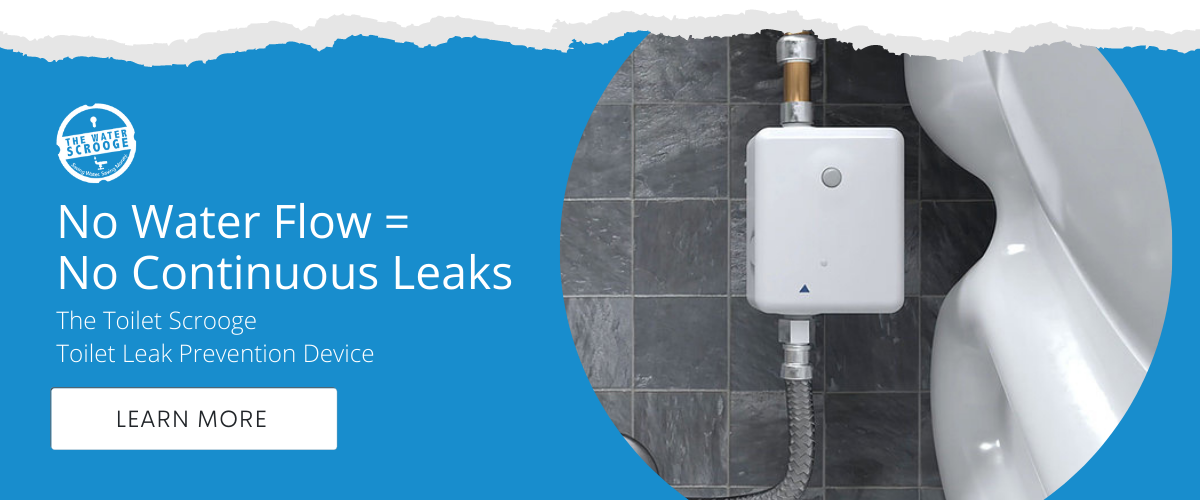
What do Sony Playstation, the sitcom Friends, and water saving toilets have in common?
All were launched in 1994, and all were significantly improved upon in the years that followed.
Especially, environmentally friendly toilets that have since become more ubiquitous. But early on, there was a significant problem... How can we put this delicately?
The first water efficient toilets created quite a stink. Though they did an excellent job conserving water—1.6 gallons per flush vs. the previous 7 gallons—they did a terrible job transporting waste.
Early consumers complained of frequently clogging toilets, in addition to needing several flushes to clear the bowl. Today, it's a little better - but it's not perfect. Let's take a look at reasons your water efficient toilet might be wasting just as much water as regular toilets.
Water Saving Toilets
The Good News: Today's low-flow models are just as powerful as their traditional counterparts.
The Bad News: They have been sold to provide more savings than they often actually do in reality.
And it's not because of downright deception; it's simply because of one overlooked variable (more on that in a moment). Of course, the promise of increased savings is a large part of why patrons initially invest in conservation products. The Environmental Protection Agency claims replacing your pre-1994 guzzler with a water saving toilet will reduce annual water bills by $90, on average.
While that is nothing to sneeze at (especially, if you are the landlord of a multi-family property), it isn't THAT exciting. Wouldn't you prefer to save a lot more?
For the remainder of this article, we'll reveal why low-flow toilets don't always deliver the savings they promise and what you can do about it:
Toilets Lose Efficiency Over Time
On average, toilets gradually begin to lose efficiency after their first year of regular use. Meaning, fill valves are releasing more and more water into the bowl per flush.
There are several reasons this can occur, including mineral deposits corroding parts, backed up water pressure and faulty flappers. So, while the environmentally-friendly toilet is a great start, it's not enough in and of itself to reap substantial savings.
The solution lies in regularly calibrating your toilets: Calibration is simply the process of fine-tuning parts within the tank, so the toilet uses the minimal amount of water needed. By replacing your tank's components with higher-quality parts (we're talking a few dollars cost here, at most), and resetting them, you'll fix costly running leaks that silently rack up bills into the thousands.
Leaks Cancel Out Efficiency
Your next savings culprit? Toilet leaks.
You can invest in the fanciest commode available, but any savings benefits will quickly be canceled out due to unattended leaks. The exception being the minimalist Kohler Hatbox, which is so streamlined that it doesn’t even require a tank. But you'll pay a pretty penny for that.
In case you're wondering, toilet leaks have very little to do with age. Like any other contraption that receives significant use, toilets often begin to feel the strain soon after purchase.According to the American Water Works Association, an estimated 1 in 5 toilets are leaking at any given moment:
-
- One medium-sized leak can waste as much as 250 gallons a day.
- Which translates to roughly 108,000 gallons a year.
- Which translates to roughly $24,000 a year for a 100-unit building.
From what we've seen, the savings of installing a Water Sense toilet (an estimated $90/year) is negligible compared to the savings of correcting a medium-sized leak. But not so fast...
Tenants Don't Report Leaks
If this article were written for the average home-owner, it would end here. We would tell you to routinely calibrate your toilets, check for leaks and call it a day—YouTube can teach you how to do both tasks.
But this article is for landlords and property managers of large, residential buildings. In your situation, routinely checking every toilet for leaks isn't practical. Maintenance probably has better things to do.
However, you can necessarily depend on tenants to alert you when leaks occur. Since they often don't hear them and, when they do, they often aren't bothered by them - after all, they aren't footing the bill.
If you want to obtain maximum water savings, you need something else...
The Solution: Wireless Toilet Monitoring
The new Toilet Scrooge is a wireless electronic monitoring system, allowing landlords to monitor toilets for leaks around the clock.
The unobtrusive device sits near the toilet’s base, instantly alerting you to potential issues as soon as they arise. Just open your mobile app, and have access to data points like:
- Toilet Fill Cycles
- Flushes Per Day
- Times of Use
Assuming it's expensive?
Think again—find one leaky toilet and the device will have already paid for itself in most cases. Our team will even continue virtually monitoring your toilets on your behalf, post-installation, free of charge. That way, you can be sure to never miss a thing.
Check out this valve that will fix 80% of your leaks!
About The Water Scrooge™
The Water Scrooge™ offers water conservation ways and products to multi-family landlords and homeowners, including: shower flow controllers, Leak Detection Systems, Toilet Leak Prevention Devices (The Toilet Scrooge™), water flow management devices (SMART Valve™), toilet calibration and DIY products.
Also featuring The Water Scrooge™ App. Our app empowers your team to carry out the installation of our kits. With it, you can also record and track data points about the units (other than water usage).






